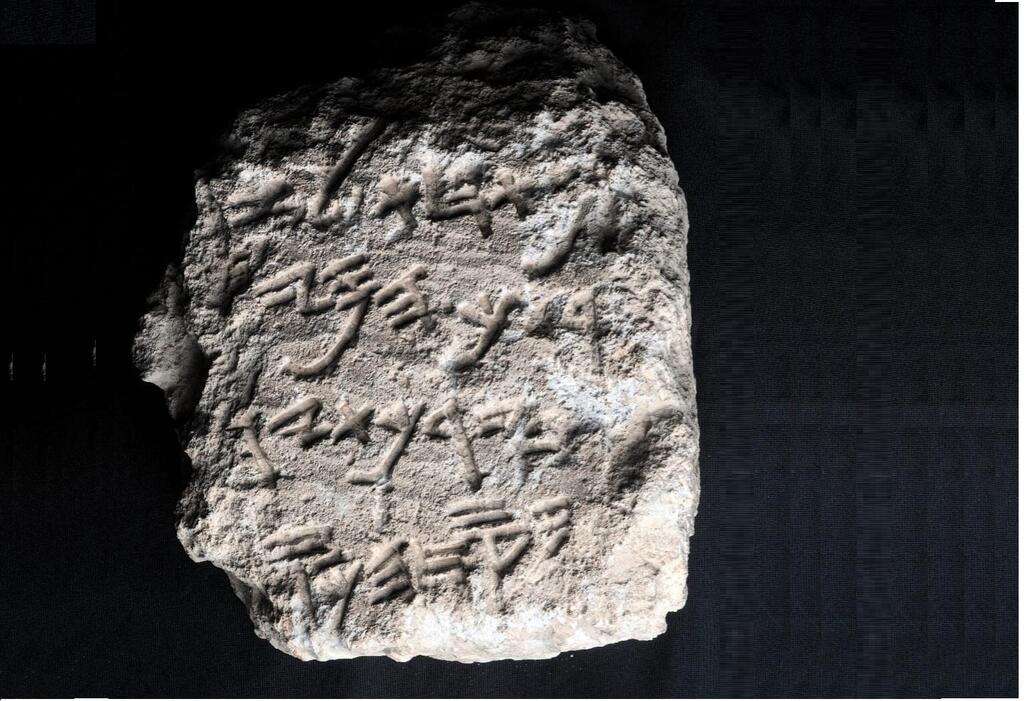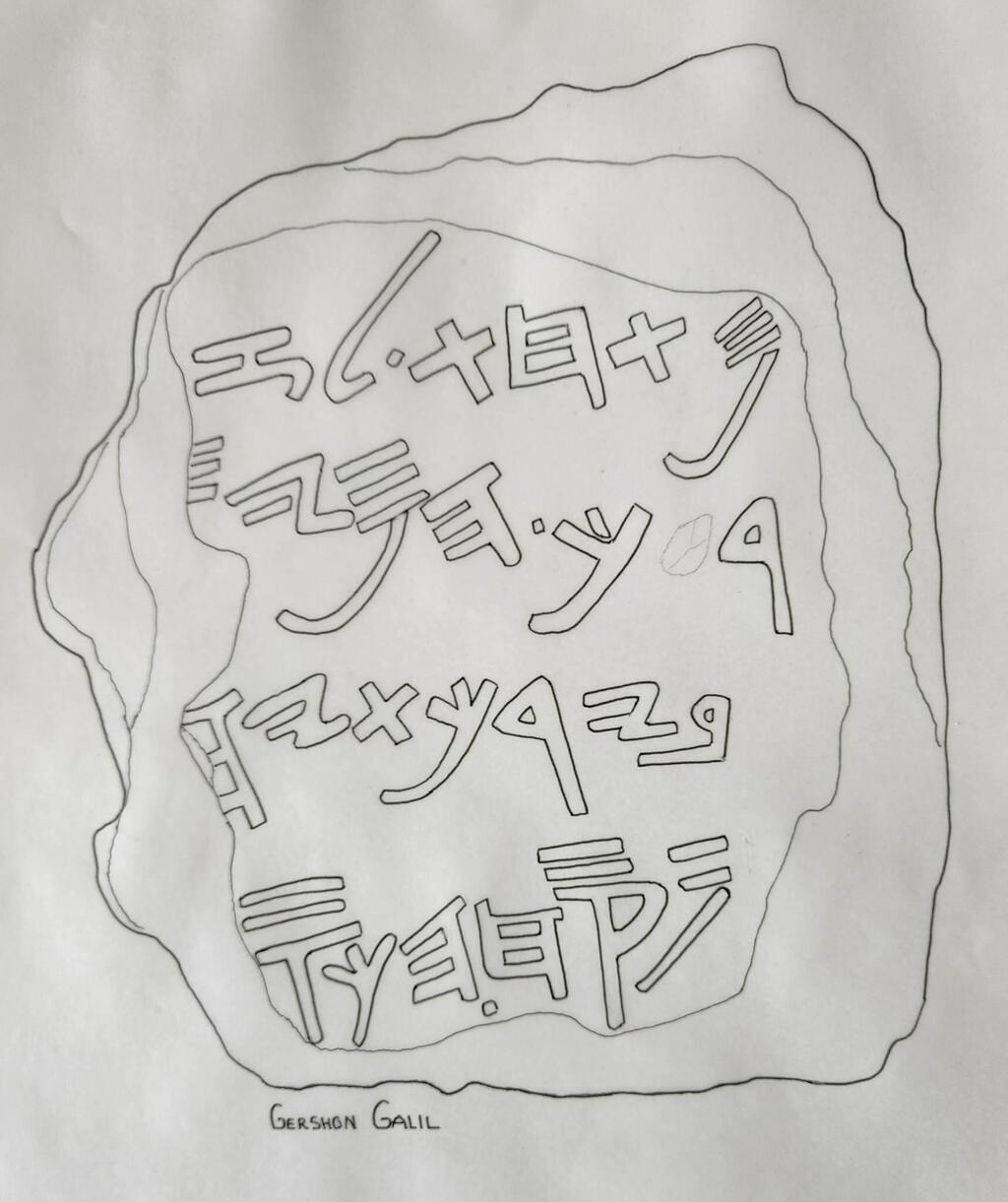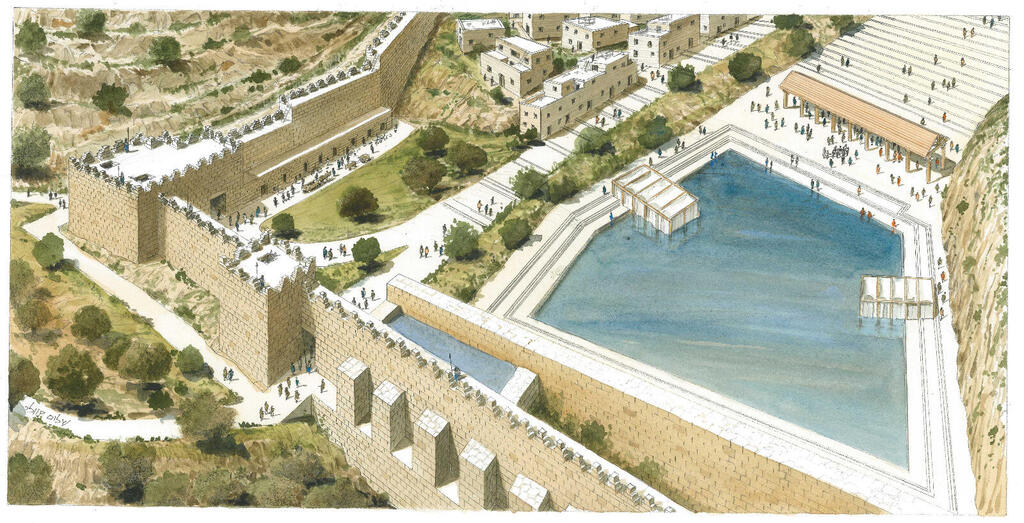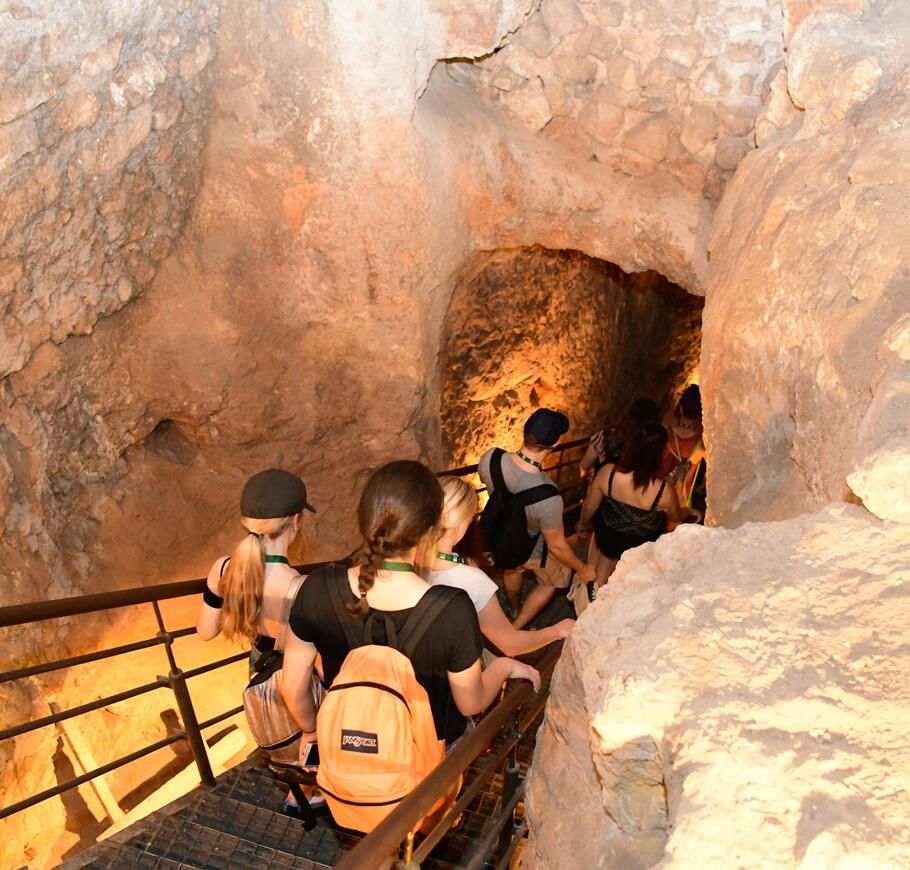Getting your Trinity Audio player ready...
Forty-one years after an ancient stone inscription was discovered south of the Temple Mount, innovative imaging helped Prof. Gershon Galil decipher the text, according to him.
Read more:
"It is now clear that this inscription is related to the great water project of King Hezekiah, and also to the seven other inscriptions of Hezekiah that were discovered in the City of David and in the Siloam Tunnel," he claims.
5 View gallery


Hezekiah inscription, from the collection of the Antiquities Authority
(RTI image: Prof. Moshe Caine. Hadassah Academic College Jerusalem, courtesy of the Israel Museum, Jerusalem)
"The inscription attests to the tremendous power of Hezekiah and tells of the anger of his officials or opponents, who, after the king's death, deliberately damaged his inscriptions in an attempt to tarnish his memory and erase his achievements."
For those who have forgotten their Bible and history lessons, here's a reminder – in the eighth century BCE, the nation of Israel was divided into two kingdoms: Israel and Judah. Hezekiah, the king of Judah, lived in a challenging era when the Neo-Assyrian Empire conquered the kingdom of Israel. In addition, unbearable pressures from the Philistines forced the king of Judah to fight them.
"Hezekiah made a strategic decision to rebel against Assyria and ally with the Egyptian Empire," explains Prof. Galil from the Department of Biblical studies at the University of Haifa, who heads the Institute for Bible and Ancient History Research in Rehovot.
"This is somewhat analogous to Israel severing ties with the United States in favor of a defense pact with China." In response, in 701 BCE, Sennacherib, king of the Neo-Assyrian Empire, embarked on a military campaign to suppress the rebellion.
"To prepare Jerusalem for the expected siege, Hezekiah erected a massive wall about seven meters thick, part of which can be seen in the Jewish Quarter, among other fortifications," says Galil.
"He also constructed an impressive water system, including the Siloam Tunnel. Contrary to popular belief, diverting the water from the Gihon Spring through the tunnel to a pool inside Jerusalem is not the most astonishing part of this endeavor.
“A few months ago, fellow researcher archaeologist Eli Shukron demonstrated that there's a channel that returned the water from the pool to the Gihon aquifer underground, creating a closed loop, preventing water loss and its transfer to the Assyrians. This is an unparalleled achievement for that time period."
5 View gallery


Drawing of the inscription
(Drawing: Prof. Gershon Galil, head of the Institute for Biblical and Ancient History Research)
The Assyrians also had waterworks.
"But not with such ingenuity."
The Bible describes a vast tribute paid to Assyria. How does this align with the power you attribute to Hezekiah?
"The description in the Bible, and for instance in the Taylor Prism – Sennacherib's victory inscription – confirm that the Assyrian Empire did not conquer Jerusalem. Both descriptions mention a massive tribute, tons of gold and silver in today's values, that Hezekiah paid to Assyria. But if after these water and massive construction projects, and the tribute he paid, he still had money left to continue his rule, it indicates a king who remained wealthy. In today's terms, he would have been a billionaire."
Innovative 3D photography method
Back to the inscription discovered during the Sukkot of 1982. It pertains to a stone tablet measuring 27 cm by 23 cm, roughly the size of an A4 paper, on which 25 beautifully engraved letters remain, divided into four lines:
1. [...] below. To the s[...]
2. [...] length. The wa[...]
3. [...] In the depths of the [...]
4. [...] were displaced. A portion of the sil[...]
For many years, several researchers made assumptions about the missing letters and the original text. However, all these researchers relied on regular still images of the inscription, which is housed in the Israel Museum.
According to Prof. Galil, his new interpretation was made possible thanks to an advanced imaging technique used by Prof. Moshe Caine, head of the Jerusalem Institute for the Research and Digital Documentation of Cultural Heritage at Hadassah Academic College, together with Dr. Doron Altaratz, a researcher at the institute and a lecturer in the Department of Photographic Communication at the college.
Prof. Caine explains that "to assist in deciphering the inscription, two digital imaging techniques were used: photogrammetry and RTI. Photogrammetry is a process of 3D photography that allows for detailed and meticulous study of the content from every possible angle. RTI (Reflectance Transformation Imaging) is a computational photography process that uses a series of images illuminated by an array of different lighting conditions from a fixed camera position, aiming to virtually and interactively reveal the characteristics of a photographed surface.
"Both techniques are popular today in the fields of archaeology and epigraphy for exposing and deciphering inscriptions, engravings of symbols, and letters on stone, metal, pottery and similar materials."
After analyzing the photographs, here is Prof. Galil's interpretation of the inscription:
1. [...] from below. To the si[de. In the rock, carved]
2. [the tunnel. Two hundred thousand cubits in] length. The wa[ter brought to the city]
3. [...by ascent.] In the depths of the [earth...]
4. [...men from there] were displaced. A portion of the sil[ver and gold was amassed]
"In the other inscriptions from the time of Hezekiah that were meant to glorify the king, there were four important topics – the water project, the large amount of silver amassed, the war against the Philistines and his religious reform," Galil says.
"Using the new imaging, I tried to see if these topics also appear here. The word 'water' indicates the water project. The end of the fourth line, which Prof. Yosef Naveh already suggested is part of the word 'silver', relate to the second topic out of the four. This reading is now also based on an inscription of Hezekiah found by Yigal Shiloh in the City of David, in which the first line reads: '... amassed. The si[lver]', and on the description in 2 Kings 20:13."
Therefore, my interpretation is '[people from there] were displaced', meaning the displacement of people following the war, and this is the third topic out of the four. As is known, in the inscriptions of Sennacherib, it is told of the exile of Padi, the Philistine king of Ekron, by Hezekiah to Jerusalem."
"The first part of the fourth line caught my attention. During that time, the verb was used to signify uprooting or displacement, as seen in Hebrew references like Deuteronomy 28:63 ('And you shall be plucked from the land you are to possess') and also in Akkadian.
“Thus, my interpretation is '[people from there] were displaced', indicating the aftermath of the war. This represents the third of the four themes. Notably, Sennacherib's inscriptions recount the exile of Padi, the Philistine king of Ekron, by Hezekiah to Jerusalem."
And what about religious reform, the fourth topic?
"This part was not preserved in this fragment, which likely represents only about a tenth of the complete inscription. The reform is mentioned in other inscriptions from the City of David, which I have recently deciphered."
Is it possible that the people of Judah, who were not pleased with Hezekiah, specifically sought to deface this part of the inscription?
"It's possible, though note that all of Hezekiah's inscriptions were intentionally shattered and defaced in an aggressive attempt to hide them. This includes those found in the City of David by Reich, Shukron and Shiloh. Similarly, the burial inscription of '(Shebna)yahu who is over the house' [the royal steward] was deliberately defaced precisely where his name was written. Such a practice was also common in the Ancient Near East. For example, in the inscription from Tell Rimah of Adad-Nirari III, King of Assyria, its lower part was damaged. There's also the 'House of David' inscription from Tel Dan, among others."
5 View gallery


The Siloam Tunnel in Second Temple period
(Illustration: Shalom Kveler, City of David Archives)
What else did you discover with the help of the imaging that was previously unknown or unclear?
"At the beginning of the second line, there are two letters – a Resh (ר) and a Kaf (כ). Some had read another letter between the two. Now, it's undoubtedly clear that Prof. Yosef Naveh was right; there is a gap due to a flaw in the stone, and there isn't an additional letter between them. Also, it's now clear that the last letter in the third line is an Aleph (א) and not a Vav (ו)."
Someone took care to deface the inscription
The deciphered inscription will be published in the coming year alongside seven other inscriptions of Hezekiah in the new book by Prof. Galil and Eli Shukron, “The Inscriptions of Hezekiah, King of Judah.” The title will be released in both Hebrew and English as part of the new Scroll of the Book series by the Institute for Biblical Research and Ancient History. Six new books will be published under this imprint this year alone.
Regarding the upheaval following the death of Hezekiah and the ascent of Manasseh to power, Prof. Galil explains, "We must remember that Manasseh was only 12 years old at the beginning of his reign, and the ones who truly ruled were the senior officials, opponents of Hezekiah. They were angered by him because he limited their power and also prohibited their worship of Asherah and the bronze serpent (Nehushtan).
“Hezekiah obligated the people to worship only the Lord. In the famous Siloam inscription, there is apparently no mention of King Hezekiah - as his opponents tried to erase his memory, but they failed. Even the new inscriptions we recently discovered in the Siloam tunnel were targets of intentional defacement. However, the attempt to erase them was not thorough enough, making them still legible."
He adds, "In this case before us, someone intentionally damaged and then shattered the inscription, which originally was probably about 120 cm in width and 50-60 cm in height. If it was located in the Ophel, it was shattered on-site. And higher up on the Temple Mount, they also threw parts of the inscription off the wall, southward and downward, where it lay waiting for its discovery and deciphering for more than 2,700 years."




